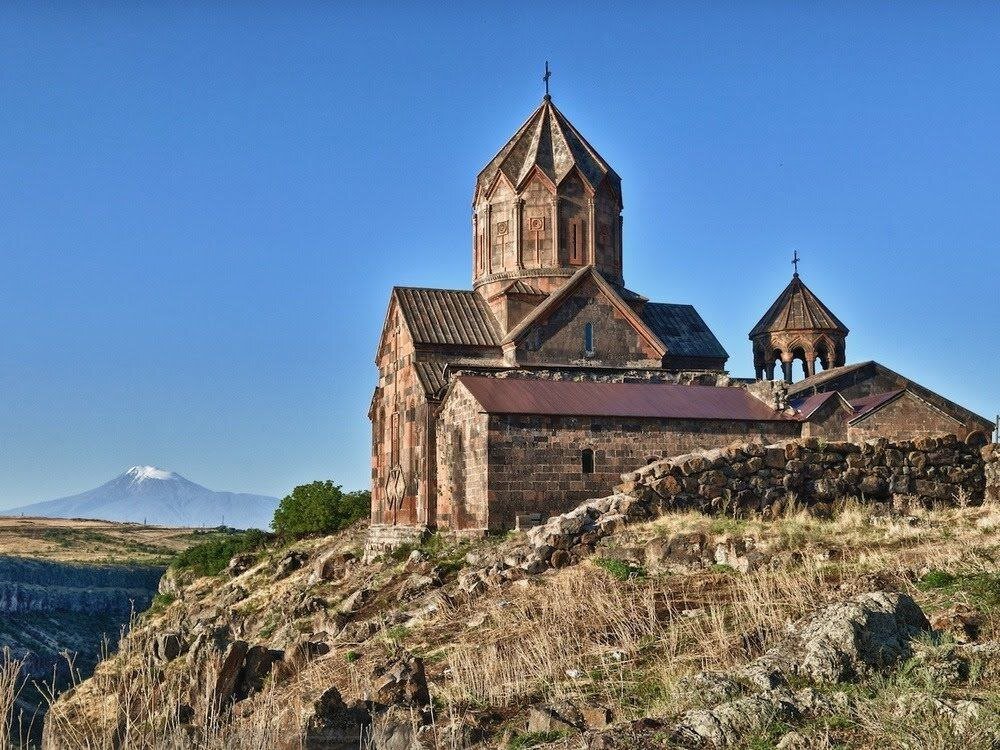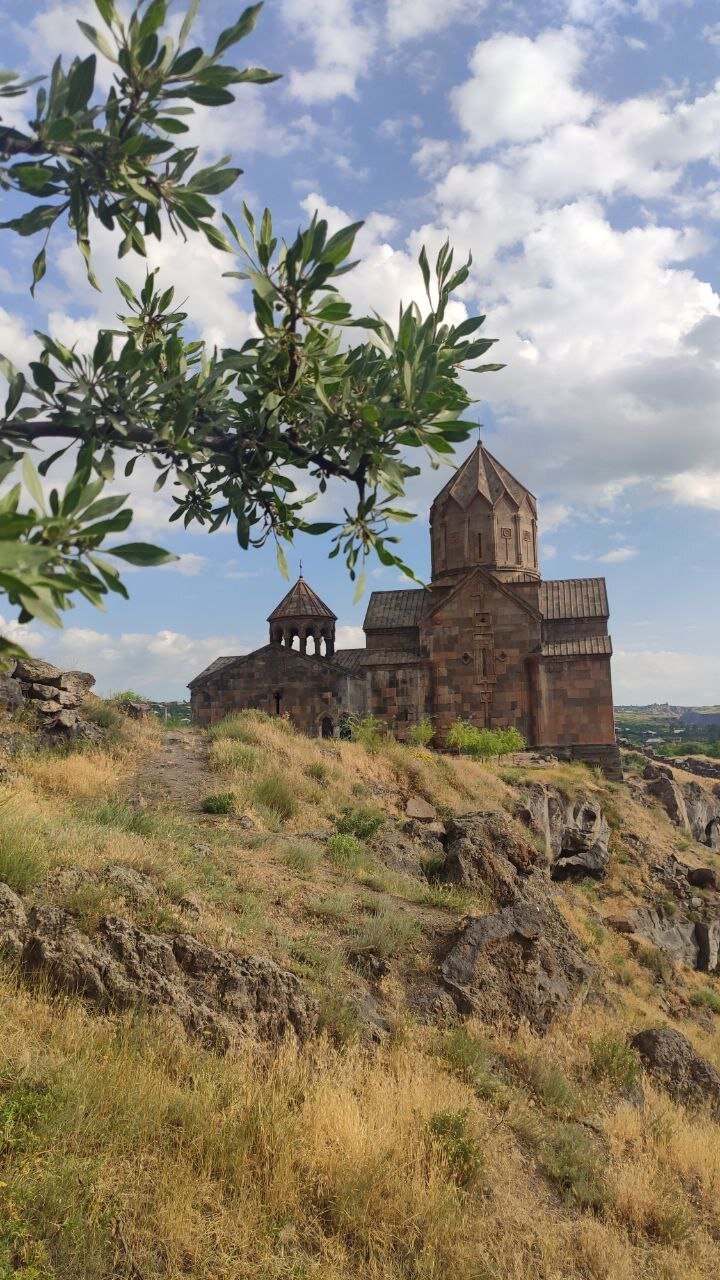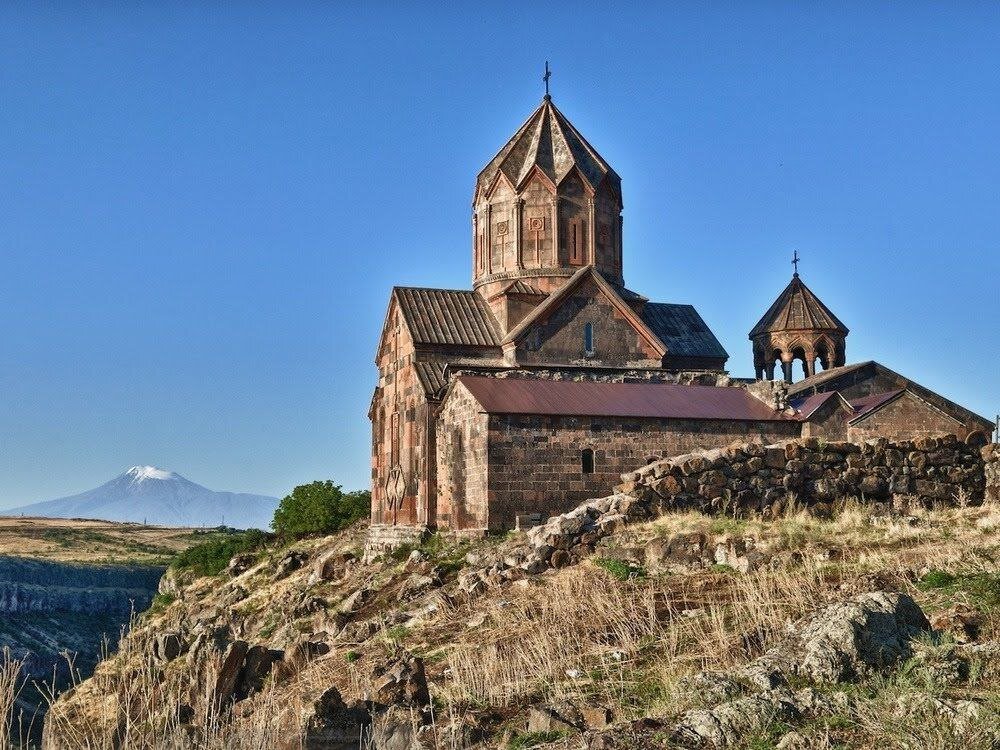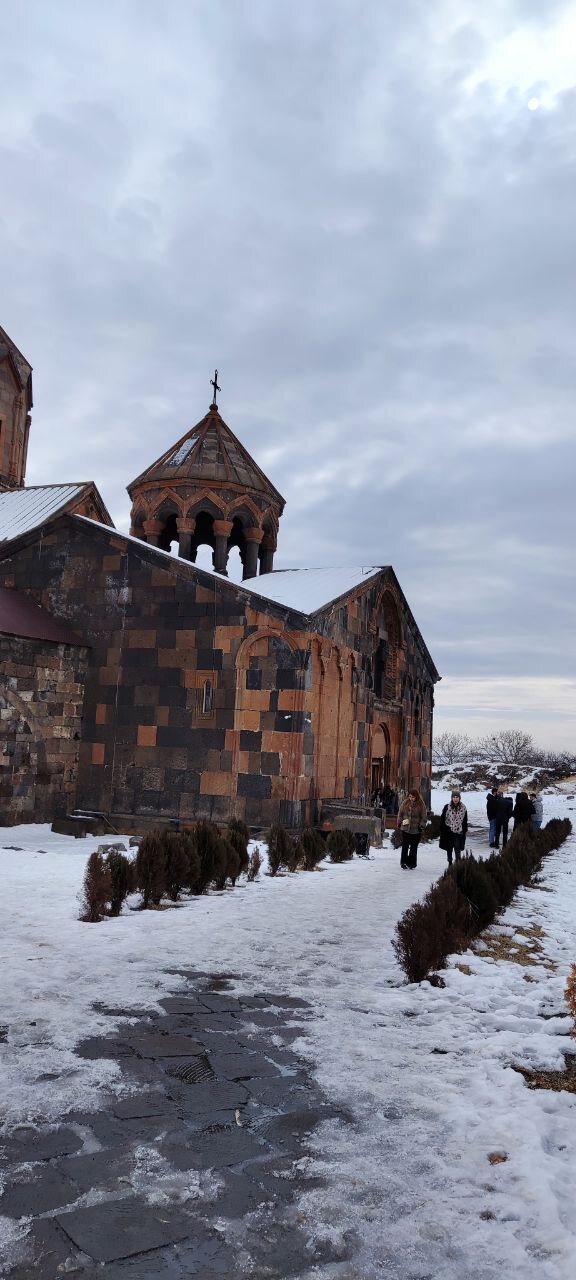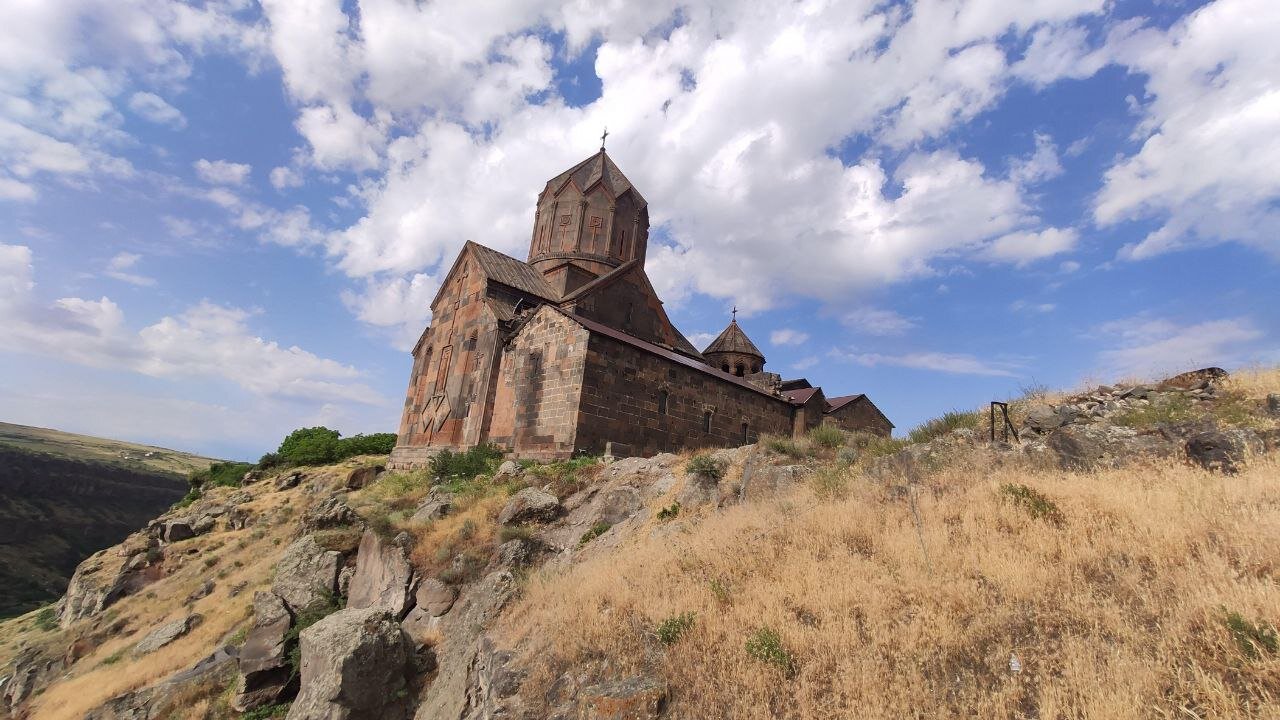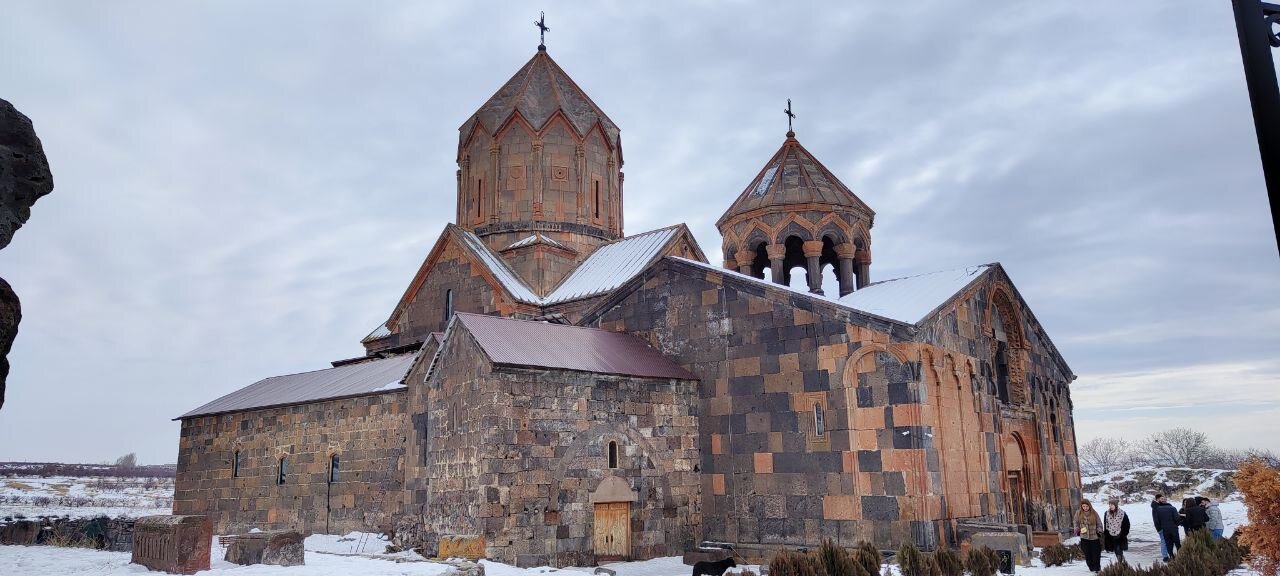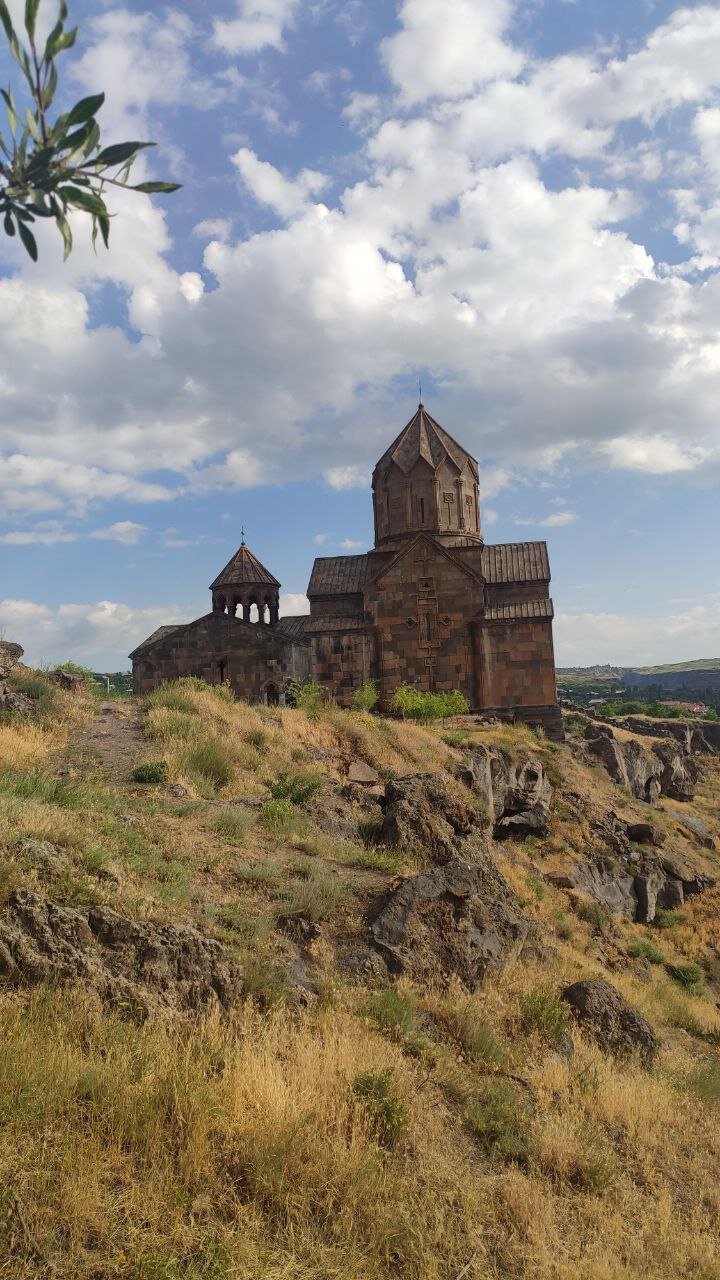The Ovanavank Monastery
The Ovanavank Monastery, situated in the village of Ovanavank in the Aragatsotn Province of Armenia, is a historically and architecturally significant complex. Located on the left bank of the Kasakh River, on an elevated site, it stands as an important monument of Armenian history and culture.
The monastery complex was built on the site of a pagan temple, and in the 4th century, Grigor Lusavorich (Gregory the Illuminator) established the Church of St. Hovhannes Mkrtich or St. Karapet here. However, the main church of St. Karapet and the basilica were constructed between 1216-1221 by Prince Vache Vachutyan and his son Kurd, while the narthex-chapel adjacent to the main church and basilica was added by Kurd Vachutyan in 1250.
Ovanavank was once surrounded by a mighty fortress belonging to the princely Vachutyan family, characterized by sturdy walls and seven towers. Around 100 inscriptions, especially those of the Vachutyan princes, are carved on the monastery walls, documenting genealogies, construction details, and donations.
Among the significant aspects of Ovanavank’s history is its manuscript center, one of the oldest cultural centers in the Araratian country. From the late 16th century, the Ovanavank school studied calendar art, philosophy, and music. Many manuscripts preserved to this day are housed in the Mesrop Mashtots Matenadaran.
In the 13th century, Ovanavank also served as the residence of a bishop and the center of the Amberd Diocese, underscoring its importance as a spiritual center of the region.
The Ovanavank Monastery is not only an architectural marvel but also a symbol of Armenian culture, history, and spirituality. Its rich heritage and history make it an important subject of study and an attractive destination for tourists and pilgrims.
